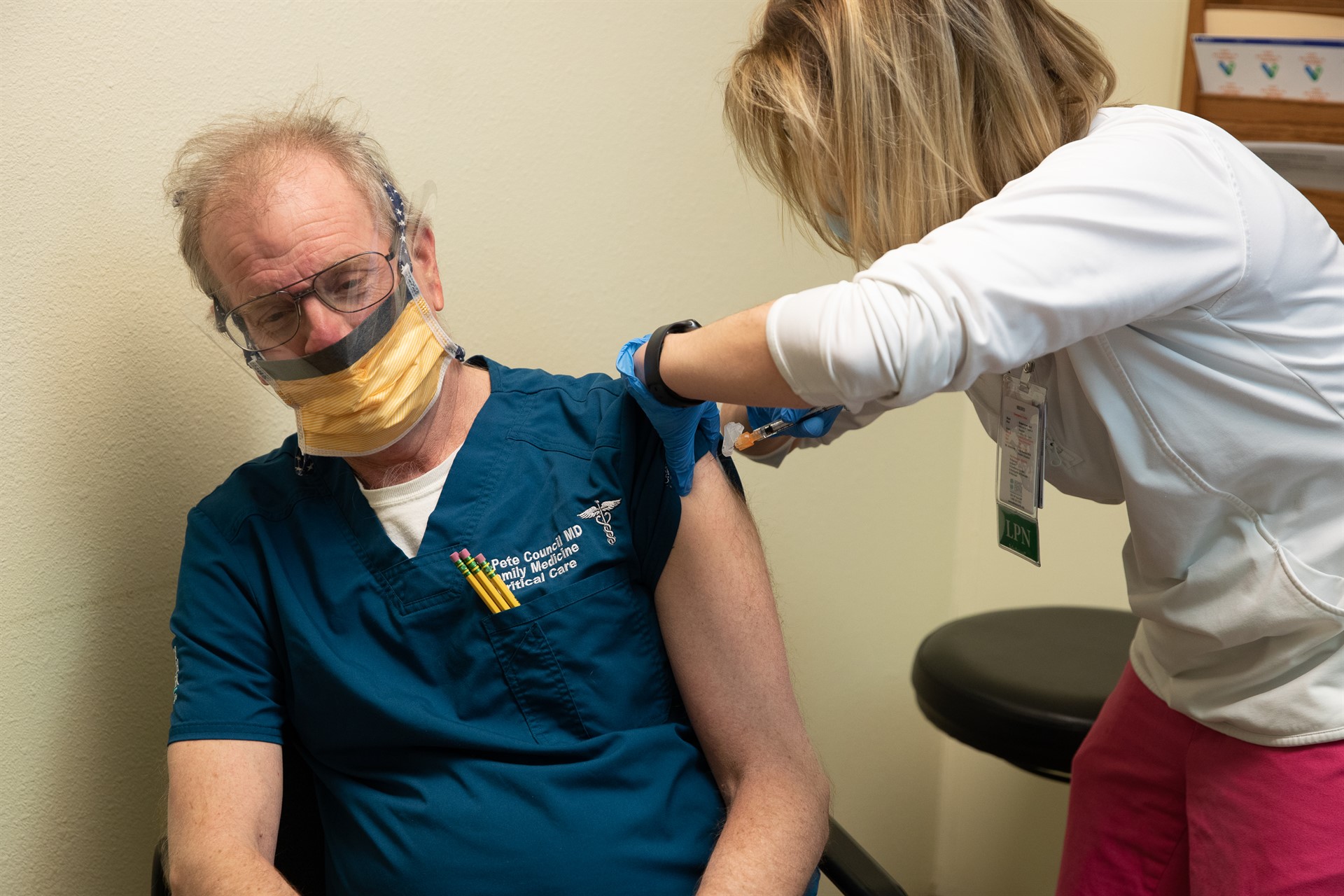COVID-19 Vaccine Information by Dr. O. Pete Council

Molecular biology and gene expression --- what is messenger RNA?
mRNA or messenger RNA is a large molecule containing the instructions to build a particular protein. mRNA is made in the nucleus of the cell using instructions held in the DNA or chromosome. Once made the mRNA is transported to the cytoplasm outside the cell nucleus. There another mechanism uses this molecule, meaning the mRNA, as instructions to build a particular protein.
Need for the vaccine
Controlling the COVID-19 epidemic will be greatly aided by a mechanism to prevent clinical infection when exposure to the virus occurs. The hope is that such a mechanism would also reduce asymptomatic transmission if only by preventing replication of the virus and high viral loads. Studies have shown that without intervention large scale immunity or herd immunity of the human population could occur over several years, but modeling demonstrates that this will require about 30 million deaths and continuing outbreaks over the course of several years. Model studies also show that a vaccine that is effective at the 60-70% level would produce herd immunity relatively rapidly. Consequently there is strong motivation to develop a successful vaccine.
Vaccines in the past have been made in a variety of ways
- Development of a non-pathogenic strain of the virus and then injecting that into the patient. This generates a full innate and adaptive immune response in some cases. The non-pathogen strain of the virus is produced in large amounts by growing it in cell culture.
- Extraction of portions of the pathogenic organism, such as toxins that it produces or structural portions of the organism that are recognized by the immune system, and then injecting only those into the patient. If the extracted part of the organism is a polysaccharide, it has to be combined with a protein or conjugated with a protein in order to obtain full immune response including the crucial activation of helper T cells. Large scale production of the antigen in this case depends on culture of the pathogenic microorganism or an attenuated version.
- Laboratory synthesis of protein antigens which are then combined directly with other immune system stimulants and then injected into the patient. Large cell production of the antigen in this approach is strictly synthetic with no culture of organisms involved, but this does require large scale production of proteins which is relatively difficult just from a chemical engineering point of view.
All these approaches require considerable development time. Much of that devoted to issues relating to live culture problems and large scale laboratory production of proteins.
Messenger RNA vaccine approach
To avoid some of the problems detailed above, a new technique has been developed based on messenger RNA.
This approach is based on two fundamental observations. First, mRNA can be injected into a human cell and that mRNA will be transcribed and a protein (antigen) produced. The actual cell can then be used as a protein factory, in effect. Second, if mRNA is encapsulated in a shell of lipids forming a "nanoparticle" and this structure is introduced into the human cell, vigorous humoral and cell-mediated immune response occurs, effectively mimicking an actual viral infection.
These observations were actually made about 20 years ago. Since then much research effort has been directed to precise understanding of the kind of proteins that can be used to induce an immune response, exactly how the immune system is stimulated by the nanoparticles and then ways to control that response.
With regard to Covid-19, the previous experiences with both the SARS outbreak in 2002 and 2003 and the continuing struggles with Middle Eastern respiratory syndrome provided information about coronaviruses that are very similar to the Covid-19 virus. This greatly accelerated efforts to understand how this new virus behaves.
The advantages of this mRNA - nanoparticle approach include the speed with which it can be developed --- producing large amounts of messenger RNA is much easier than producing large amounts of protein and the avoidance of living cell culture greatly reduces the possibility of biological or chemical contaminants.
It is likely that the inherent immune stimulation effect of the mRNA particle will produce a long-lasting immunological protection. While this is not currently known to be true, it is of great interest. The duration of protection from the new vaccines will be very closely watched.
Safety
Most safety problems with vaccines in the past have been a result of contaminants arising from the need to use living culture media of one kind or another. As detailed above the messenger RNA-nanoparticle approach completely avoids that. Other potential safety issues include:
- Possible alteration of the human cell DNA. The messenger RNA molecule remains outside the cell nucleus and interacts with the protein synthesis machinery in the cytoplasm and not with the DNA in the nucleus. The messenger RNA is rapidly broken down by the cell and in fact one of the engineering challenges in the vaccine development has been to prevent the messenger RNA from being broken down before the protein antigens can be made.
- Previous experimental vaccines against viruses have on rare occasions made vaccine recipients more, rather than less, susceptible to disease. This occurred with some early experimental vaccines directed against RSV virus, the Dengue virus and even measles. The difficulty in the situation seems to relate to the antibodies made being only partially neutralizing the virus. These vaccines were also all whole virus vaccines. The current Covid vaccines are much more carefully engineered with exact understanding of the structure of the relevant antigen (the surface spike protein for Covid-19). Further, extensive testing in mice and primates has not revealed any clinically significant disease worsening after vaccine and clinical trials in human subjects of the Covid vaccine has not shown any such effect.
